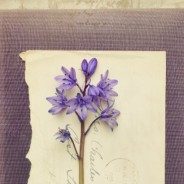Broken Vessels: A Recommended Book
I have, for a long time now, loved the way that Andre Dubus writes. I love the clarity of his writing, the specificity, the rhythm of his prose, and something else too—this sense in everything he writes as if he knows something about loss—knows that all of this—everything—is impermanent—but he’s writing lovingly about it anyway. I could recommend any one of his books. His early story collections. His selected stories. His second book of essays, Meditations from a Movable Chair. His last book of stories, Dancing After Dark, which was published in 1997, two years before his death from a heart attack. But it’s this book—Broken Vessels—his first book of essays—that speaks, in a very personal way, to falling apart. In July of 1986, Dubus stopped one night at the side of the highway to help a motorist in distress. While standing on the side of the road he was hit by a car. The impact cost him one of his legs and much of the use of his second leg, landing him in a wheel chair. Broken Vessels is a book of essays he published in the wake of that impact. The title essay, “Broken Vessels,” which is also the final essay in the book, begins this way: On the twenty-third of June, a Thursday afternoon in 1988, I lay on my bed and looked out the sliding glass doors at blue sky and green poplars and I wanted to die. . . “Broken Vessels” is an essay saturated with loss. The loss of running. The loss of walking. The loss of his wife and children. (He underwent a separation after the accident.) The loss of writing—which happened after he’d lost his family. But the essay is not only about loss. The essay points to what is possible when one can find the right place to express this loss in some way. p. 171: The best person for a crippled man to cry with is a good female physical therapist, and the best place to do that crying is in the area where she works. One morning in August of 1987, shuffling with my right leg and the walker, with Mrs. T in front of me and her kind younger assistants, Kathy and Betty, beside me, I began to cry. Moving across the long therapy room with beds, machines, parallel bars, and exercise bicycles, I said through my weeping: I’m not a man among men anymore and I’m not a man among women either. Kathy and Betty gently told me I was fine. Mrs. T said nothing, backing ahead of me, watching my leg, my face, my body. We kept working. I cried and talked all the way into the small room with two beds that are actually leather-cushioned tables with a sheet and pillow on each, and the women helped me onto my table, and Mrs. T went to the end of it, to my foot, and began working on my ankle and toes and calf with her gentle strong hands. Then she looked up at me. Her voice has much peace whose resonance is her own pain she has moved through and beyond. It’s in Jeremiah, she said. The potter is making a pot and it cracks. So he smashes it, and makes a new vessel....
read more
